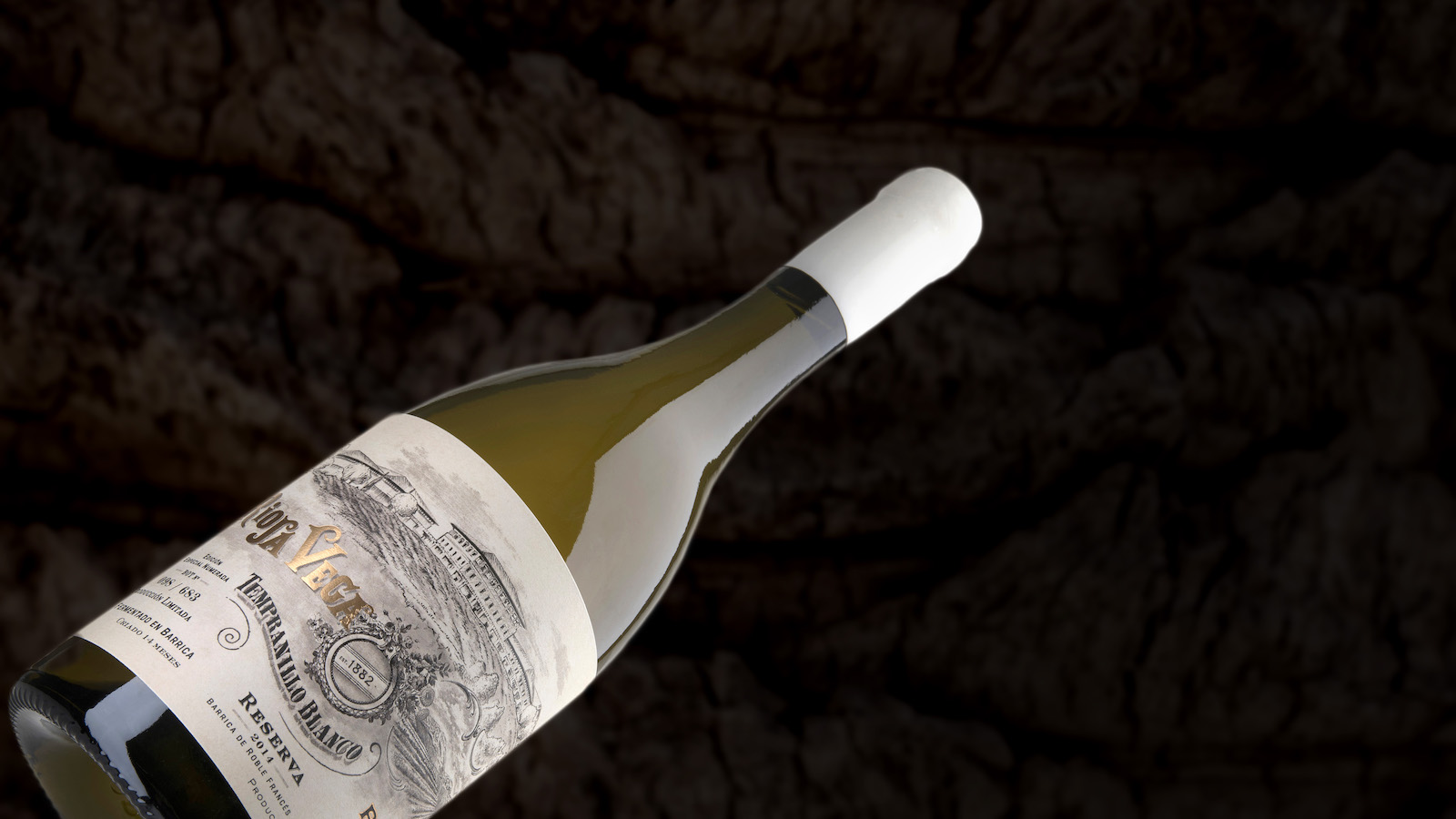Tempranillo Blanco is a unique and rare indigenous variety that originated from a natural genetic mutation of a single shoot from a red Tempranillo vine, discovered in 1988 in an old vineyard in Murillo del Río Leza, a small village in La Rioja, which is historically linked to a Roman settlement. The vine from which this variety was rescued was on the verge of being uprooted. According to the Regulatory Council of the DO Calificada Rioja, “its wines present a high concentration of volatile compounds with fruity aromas, and its total acidity remains high, highlighting the high content of malic acid.”
The organoleptic analysis reveals “excellent quality,” with a balanced palate, medium to long structure, and persistence. Its aromas encompass a wide range, from bananas and citrus to tropical fruits and flowers. Additionally, the variety is resistant to climate change effects, showing resilience against drought and wind, and it adapts well to poor, stony soils. The grape clusters are medium-sized, loosely packed, and have short pedicels, with berries ranging from small to medium.
Research by Juana Martínez and Enrique García-Escudero from the Institute of Vine and Wine Sciences helped in studying and expanding the variety. Initial efforts focused on multiplying the plant material and observing its genetic stability. The first plantation of Tempranillo Blanco took place in the Valdegón estate in Agoncillo, La Rioja, with just a hundred vines. This allowed for the first agronomic and enological evaluations, which were crucial for its subsequent inclusion in the official list of commercial varieties by the DO Calificada Rioja in 2009.
Rioja Vega’s Pioneering Effort
Bodega Rioja Vega, located in La Venta del Jalón in Viana, has been a pioneer in the recovery and cultivation of Tempranillo Blanco. They produce two wines from this promising variety, with their flagship being the Tempranillo Blanco Reserva. The 2020 vintage, which celebrates a decade since the first commercial release in 2014, is a product of a year marked by high rainfall, which led to early bud break and a relatively early harvest.
The harvest, conducted in the early morning hours of September 8, was slow and staggered, aiming to optimize ripening. According to the winery, “the quality of the grapes was excellent, resulting in balanced wines with moderate alcohol, good acidity, and lots of color.” The vineyard’s planting density is 3,030 plants per hectare, with a yield of 3,500 kilograms of grapes per hectare. The vines grow in clay-calcareous soils at 442 meters above sea level, on the slopes of the Sierra Cantabria.
The grapes are carefully selected in the vineyard and transported to the winery, where the first must (free-run juice) is extracted and fermented in French and Hungarian oak barrels for around 30 days. The wine undergoes six months of aging on its lees, followed by racking and 12 months of traditional oak aging. Once bottled, it is kept in the winery for at least 12 months before being released to the market. The 2020 vintage produced a limited run of 3,894 bottles, and it is primarily sold in export markets, especially the United Kingdom.
Tasting Notes
The Rioja Vega Tempranillo Blanco 2020 is a pale straw yellow wine with golden reflections, bright and clear, with marked legs. On the nose, it exhibits medium-high aromatic intensity, with aromas of vanilla, custard cream, and stone fruit (peach and mango), alongside ripe white fruit (apple). On the palate, it has a glycerin-like texture (similar to canned peach syrup), creaminess, and a touch of almond. It balances fruit and oak aging, with a lively acidity and a complex, medium-bodied profile with roundness.
Food Pairing
The wine pairs well with risottos, seafood, white fish, cured meats, and smoked dishes. The winery’s director, Javier Basabe, recommends it with pochas (a type of bean) with vegetables and a chili pepper, calling it “a marvel.” Winemaker Esperanza Elías prefers it with a vegetable risotto, but it also pairs excellently with fatty fish like turbot or a lightly spicy beef tartare. The winery suggests decanting the wine and serving it at a temperature between 13 and 15ºC.
Rioja Vega’s Heritage
Founded in 1882 by Felipe Ugalde in Haro, Rioja Vega is one of the pioneering wineries in the region. In 1921, it registered its flagship name, Rioja Vega, and became part of the Príncipe de Viana Group in 1983. Today, it produces around 1.5 million bottles annually, with 60% of its production exported to markets such as the UK, Germany, and Canada.
The Príncipe de Viana Group, which owns Rioja Vega, produces around 10 million bottles per year and manages 745 hectares of vineyards, with a presence in 60 countries worldwide.
Source: www.lavanguardia.com




